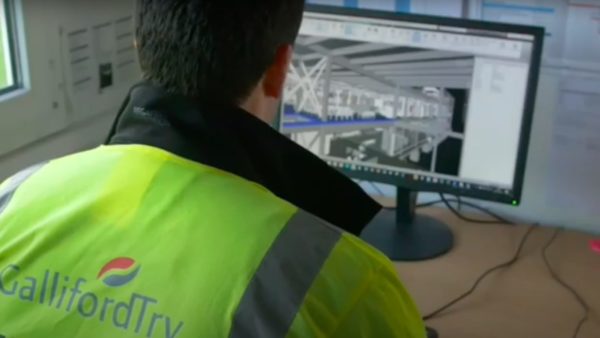Les Keen, director of sales at Amicus ITS, discusses the move from fixed desktop machines to ‘virtual’ desktops managed from remote data centres.
In today’s construction environment you are never more than one touch away from a client or colleague, and BIM is opening up a whole new way of collaborative working for construction firms and project partners through use of a central database.
Construction project teams are often collaborating from remote offices, with data stored on distributed desktop computers that are often vital to the operation of the business. This data could include designs and documentation that are essential to protecting intellectual property, or be sensitive corporate records, files, or data.
Regardless of what the data is or the individual software, there is generally a need to protect it from corruption and it must be backed up in case of a hard disk crash, user error, or malicious destruction. Data security is necessarily therefore at the forefront of the workflow process.
Also, with the wide variety of stakeholders involved in any construction project, contributors may be working on site, or from an office many miles away as well as working out of hours, so the smooth running of projects will demand IT support available 24/7, 52 weeks a year.
Regardless of the stage you are at with BIM, it is essential that your IT platform provides you with the technical capability to engage in this revolutionary collaborative way of working. For construction teams with a requirement to collaborate on projects over geographically dispersed locations, it is important to consider “virtualising” your IT infrastructure.
By adopting what’s known as Virtual Desktop Infrastructure (VDI), desktop operating systems and applications are run inside ‘virtual machines’ that reside on servers in a data centre. Users then access the virtual desktops and applications from their laptop or tablet as if the applications were loaded on their local systems. This effectively provides all of the functionality of a “traditional desktop” on a more agile infrastructure.
Virtualising your IT infrastructure enables you to maximise the efficiency and flexibility of your IT resources, whilst reducing costs and increasing user productivity. It facilitates the move to remote and mobile working, but critically it enables companies to maintain security and meet compliance regulations without having to put as much focus on the individual PCs’ security. Essentially, unmanaged PCs can still have access to applications, but the integrity of the applications and their data can be safeguarded in the data centre.
The value in desktop virtualisation is that you can virtually co-locate your entire project team to effectively work out of your office. Of course, VDI also enables you to collaborate with the project team while on site, via 3G or 4G mobile or via an ADSL line installed in a site office.
Managing desktop PCs has always been a time-consuming and challenging task and with so much highly sensitive data being bounced back and forth between contractors, firms are faced with growing security risks. Securing data is particularly important as architects are often offsite and sending and receiving data via their mobile devices.
VDI can simplify the resolution of several problems. For example, when a user calls the helpdesk, IT staff can work remotely on the problem in the data centre without the need to physically visit the individual desktop, which has obvious benefits, particularly if an individual is on-site or at a remote office. Furthermore, the IT team can manage applications and operating systems using standard desktop management tools such as Desktop Central, ensuring reassurance and a safe pair of hands to manage the problem.
In simple terms, we believe that Virtual Desktop Infrastructure reduces downtime, speeds the resolution of problems, improves manageability and control, and helps maintain IT security and data protection. The end result is improved availability and productivity for the entire project team.
For further information or to arrange a free onsite review for your firm, contact Amicus ITS on 02380 429429 or email [email protected].

Regardless of the stage you are at with BIM, it is essential that your IT platform provides you with the technical capability to engage in this revolutionary collaborative way of working.– Les Keen, Amicus ITS















